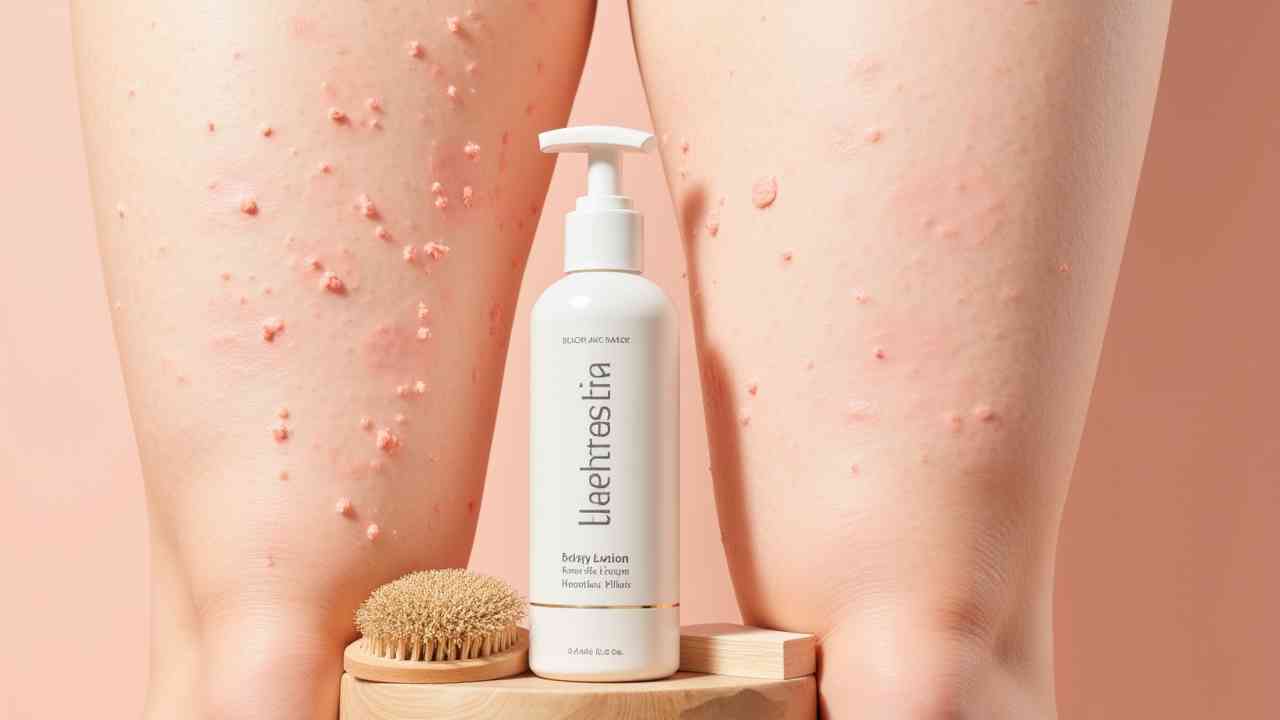
✨ How to Exfoliate Bumpy Skin (A Dermatologist's Guide to Smoothness)
✨ A Dermatologist's Guide on How to Exfoliate Bumpy Skin ✨
The small, rough, and sometimes red bumps that appear on the legs, arms, or thighs are incredibly common. This condition, often called "chicken skin" or "strawberry skin," can be frustrating and make your skin feel rough to the touch. The medical term for the most common cause is Keratosis Pilaris (KP).
So, how do you exfoliate bumpy skin to achieve a smoother texture? The great news is that while this condition is usually genetic, it is also very treatable. With a simple and consistent skincare routine, you can achieve a much smoother and softer feel. This is a perfect self-care project as the cool, dry autumn air can make the condition worse. 🍂
🤔 First, What Causes Bumpy Skin?
Keratosis Pilaris is a harmless condition caused by a buildup of a protein called keratin. This is the same protein that makes up your hair and nails. In people with KP, the keratin builds up and forms a hard plug that blocks the opening of a hair follicle. This is what creates the tiny, rough bump.
The condition can get worse when the air is dry, which is why you might notice it more during the autumn and winter months. Dry skin makes the bumps more prominent.
- What is the Most Important Step for Treatment? (Exfoliation!)
The number one strategy for smoothing bumpy skin is consistent exfoliation. The goal is to gently remove the dead skin and the keratin plugs. There are two main types of exfoliation, and a combination of both is often best.
1. Why is Chemical Exfoliation the Best Choice?
This is the most effective treatment. Chemical exfoliants use gentle acids to dissolve the "glue" that holds dead skin cells together. This helps to unblock the pores. Look for a body lotion or a wash that contains these ingredients:
- Alpha-Hydroxy Acids (AHAs): Glycolic acid and, for a gentler option, lactic acid are fantastic. They work on the surface of the skin to smooth away roughness.
- Beta-Hydroxy Acids (BHAs): Salicylic acid is a BHA. It is oil-soluble, so it can get deep inside the hair follicle to dissolve the keratin plug from within.
2. How can you use Physical Exfoliation?
This involves manually scrubbing the skin. It is important to be very gentle. Harsh scrubbing can cause irritation and inflammation, which can make KP look redder and worse. Gentle options include using a soft washcloth, a silicone scrub brush, or a very mild body scrub with fine particles.
💧 Why is Moisturizing Just as Crucial?
Exfoliation is only half the battle. KP thrives on dry skin. Keeping your skin well-hydrated is just as important as exfoliating. A good moisturizer helps to soften the keratin plugs and keep the skin supple.
For the best results, look for a moisturizer with a chemical exfoliant in it. Creams containing urea or lactic acid are fantastic. They do two jobs at once. They moisturize the skin while also gently breaking down the bumps. The most important tip is to apply your moisturizer to damp skin right after you get out of the shower. This locks in the moisture.
✅ What is a Simple, Effective Routine?
Here is a simple routine to get started:
- Wash your skin with a gentle, non-stripping body wash.
- A few times a week, you can use a wash containing salicylic acid.
- After showering, while your skin is still damp, apply a body lotion that contains an AHA (like glycolic or lactic acid) or urea.
- On the days you are not using an exfoliating lotion, use a simple, thick, hydrating cream to support your skin barrier.
Consistency is the key. With this simple routine, you will see a major improvement in the smoothness of your skin within a few weeks. ✨